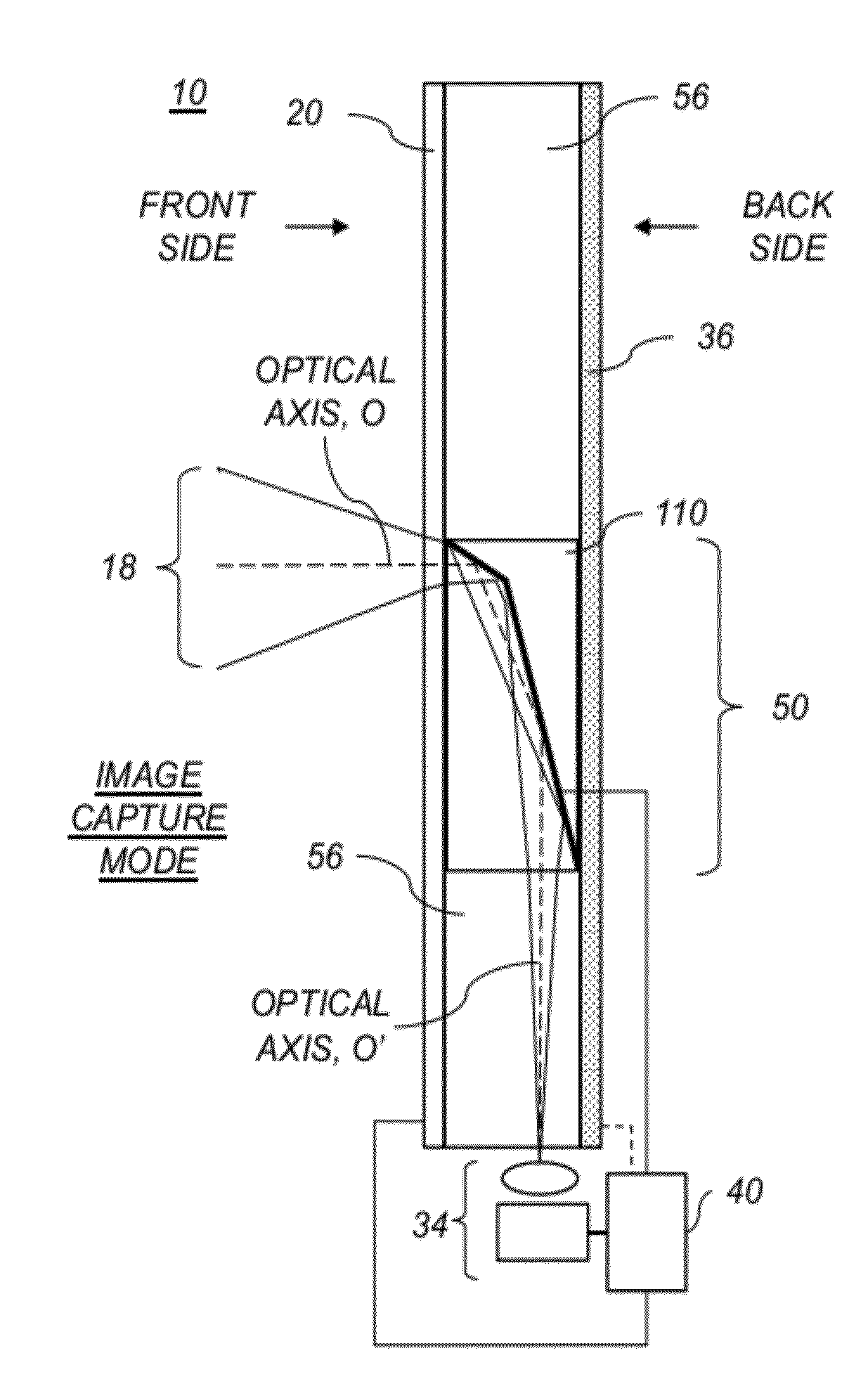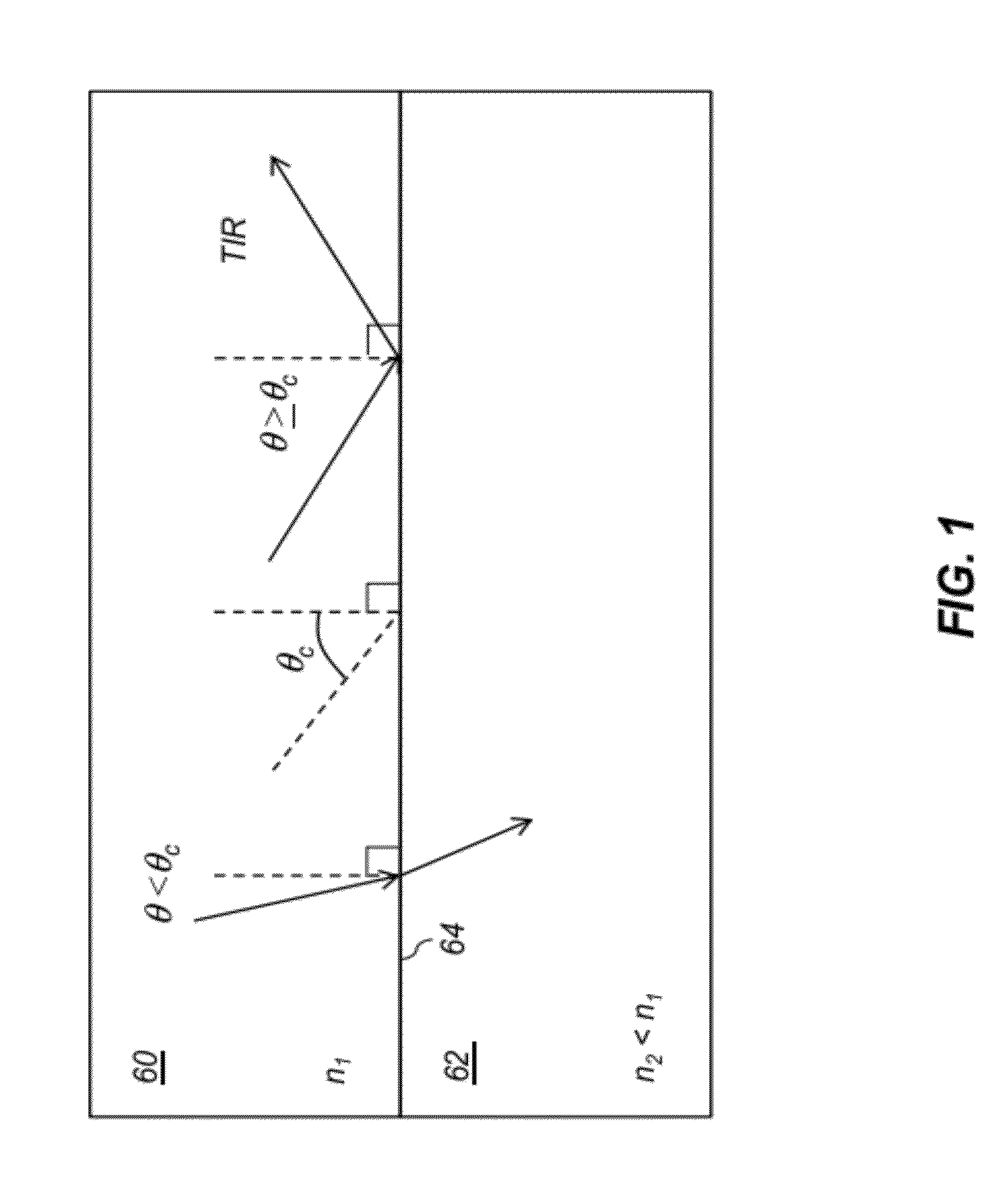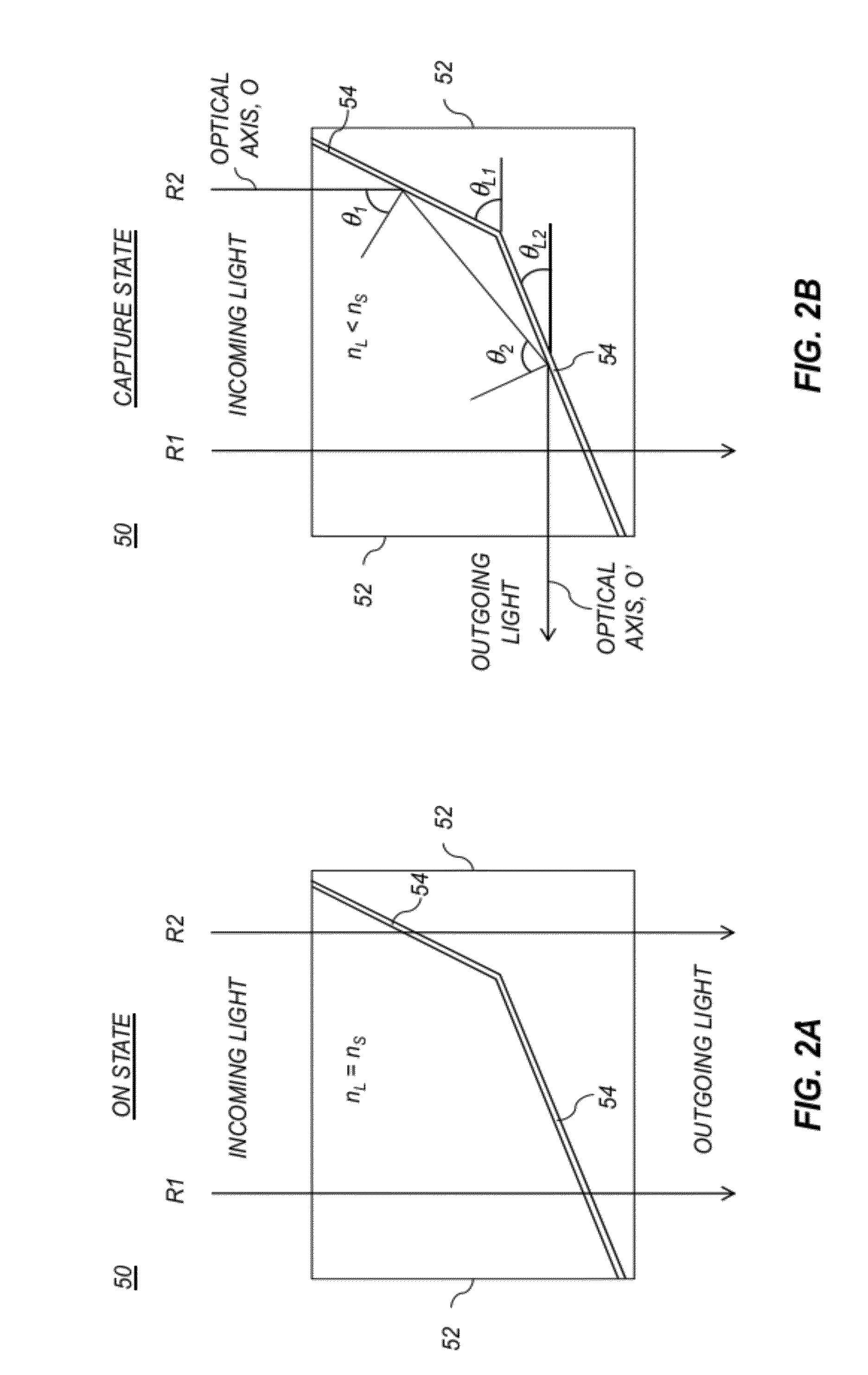Capturing images using a switchable imaging apparatus
a switchable imaging and image technology, applied in the field of image capture and display, can solve the problems of increasing optical design complexity and cost, affecting the natural appearance of the image, and the difficulty of compact device packaging, so as to achieve more natural image capture sessions and reduce the thickness dimension
- Summary
- Abstract
- Description
- Claims
- Application Information
AI Technical Summary
Benefits of technology
Problems solved by technology
Method used
Image
Examples
example 1
[0096]In a first exemplary embodiment, a switchable beam deflector 50 as shown in FIGS. 2A and 2B has two liquid crystal layers 54 made using liquid crystal material E63 from Merck. This liquid crystal material is switchable between refractive indices of nL,e=1.74 and nL,o=1.52 in response to an applied voltage signal. If the substrate 52 is fabricated with a material having a refractive index of nS=1.74, this provides a critical angle θc=60.9° when the refractive index of the liquid crystal material is at its lower value. The liquid crystal layers are positioned as shown in FIGS. 2A and 2B, with the layer nearer to the camera being oriented at an angle of θL2=22.5°, and the layer further from the camera being oriented at an angle of θL1=66.5°. With this arrangement, the light rays form consistent angles with the liquid crystal layers. The angle formed by the light rays and the normal to the surfaces of the liquid crystal layers of 67.5° is well above the critical angle θc=60.9° for...
example 2
[0097]Similar to Example 1, using a liquid crystal material 18349 from Merck, which has refractive indices of nL,e=1.80 and nL,o=1.50. Assuming that the substrate 52 is fabricated with a material having a refractive index of nS=1.50, the critical angle θc=57.6, which is well below the angle formed by the light rays and the normal to the surfaces of the liquid crystal layers. Again, TIR conditions are provided.
example 3
[0098]A transparent plate 110 similar to that shown in FIGS. 3A and 3B was designed. In this design, the transparent plate 110 was 50 mm high (top-to-bottom dimension in FIG. 3A) and 10 mm thick (left-to-right dimension in FIG. 3A), and was made from an optical material with a refractive index of 1.53. If the switchable imaging apparatus 120 has a 16:9 format, the width of the transparent plate 110 (out-of-page dimension in FIG. 3A) would be 89 mm. This would correspond to a 50 mm×90 mm display with a diagonal dimension of approximately 4 inches, which is comparable to display sizes used for consumer digital cameras. The optical path between the bottom edge of the transparent plate where the camera is located and the center of the switchable beam deflector 50 is then 25 mm. The switchable beam deflector aperture provided by the liquid crystal layer that is closer to the camera is then effectively 5 mm in the thickness direction and the full width of the switchable beam deflector in ...
PUM
 Login to View More
Login to View More Abstract
Description
Claims
Application Information
 Login to View More
Login to View More - R&D
- Intellectual Property
- Life Sciences
- Materials
- Tech Scout
- Unparalleled Data Quality
- Higher Quality Content
- 60% Fewer Hallucinations
Browse by: Latest US Patents, China's latest patents, Technical Efficacy Thesaurus, Application Domain, Technology Topic, Popular Technical Reports.
© 2025 PatSnap. All rights reserved.Legal|Privacy policy|Modern Slavery Act Transparency Statement|Sitemap|About US| Contact US: help@patsnap.com



